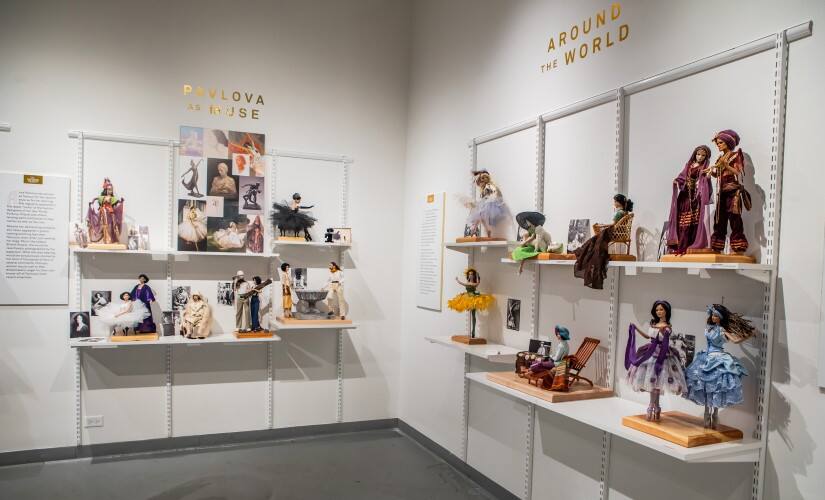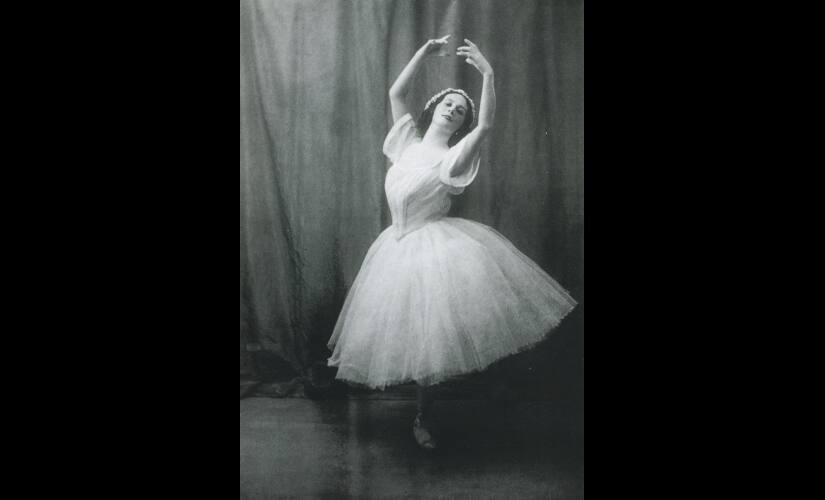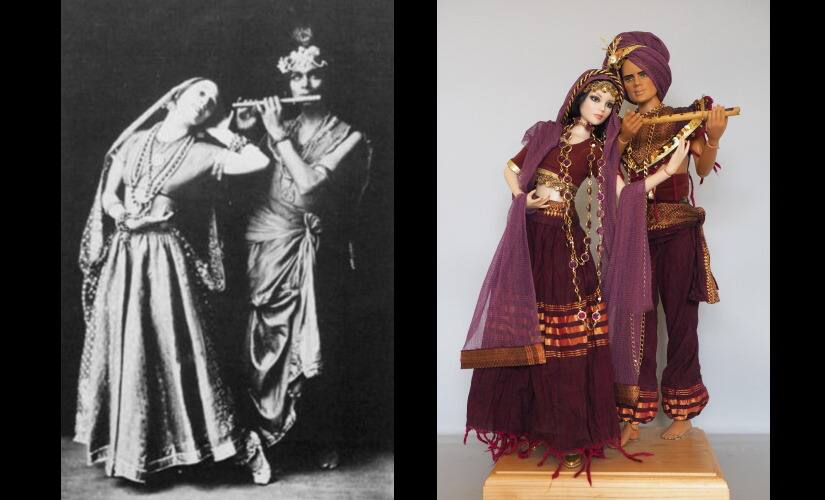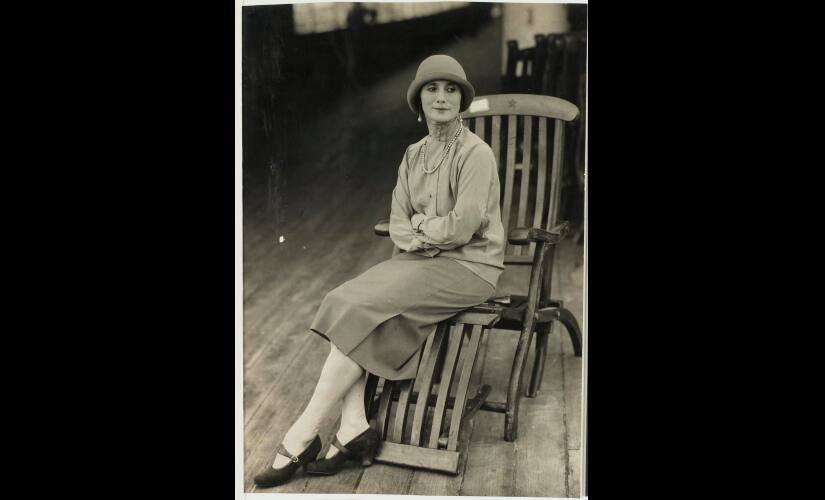The expressiveness of clothes and costumes — the political, social and aesthetic statements they make — has been acknowledged across time and place. The Natya Shastra devotes an entire chapter to a detailed description of what the characters may wear in order to aid communication of the play’s theme. Gandhiji’s loincloth and image as the “half-naked fakir” defined the national and global consciousness for decades and continues to do so. In a unique exhibition, Peggy Turchette of Boulder, Colorado presents the life and work of legendary ballerina Anna Pavlova through Pavlova’s costumes and couture mounted on dolls. And it is certainly remarkable in its impact. [caption id=“attachment_7934181” align=“alignnone” width=“825”]  The Pavlova Project exhibition[/caption] In terms of technique, Pavlova may not have been the greatest ballerina of all times or even of her own, but audiences were struck by the astonishing grace and expressiveness of her dance. She took ballet across the globe in a period when travel was not easy. And most remarkably for those times, she travelled with her own company, training and maintaining dancers, employing choreographers and musicians, creating her own repertoire and finding the opportunities and funding to present it. It is estimated that her company covered about 800,000 miles around the globe between 1910 and 1930 by ship and railroad, and performed almost every day, often in less than acceptable conditions. Endowed with a frail and delicate body, weak ankles and heavily arched feet, Pavlova had to contend with challenges on her way to becoming the ballerina the world came to know. “No one can arrive from being talented alone. God gives talent, work transforms talent into genius” — Pavlova’s key to success is found in her own words. Raised in Russia by a poor single mother, Pavlova set her mind on becoming a ballet dancer after watching a performance of Sleeping Beauty. Gifted, ambitious and hardworking, she quickly rose to the position of prima ballerina in the Imperial Russian Ballet. Her frailty was a challenge because ballet demands strength of the ankles and calves; but she turned it into the hallmark of her performances – delicate grace and the emotive power of her performances astonished audiences. [caption id=“attachment_7928551” align=“alignnone” width=“825”]  Anna Pavlova in Les Sylphides 1909. Image via WikimediaCommons[/caption] Leaving Russia and basing herself out of London, Pavlova travelled relentlessly, sometimes performing at one town in the afternoon and another in the night. At a time when ballet was not a familiar dance form except in Russia and some European cities, she travelled across the United States, Japan, China, the Philippines, Australia, New Zealand and India. The “incomparable Anna Pavlova”, as she was called, created an audience for ballet as few others did. She established and maintained her own dance company, a remarkable feat for a woman in the early twentieth century. Not only did she challenge gender stereotypes, she had little use for imperialist attitudes of white superiority. Wherever she travelled she tried to learn about the local cultures and incorporated them into her own dance. Pavlova was inspired to create her first Indian ballet when she visited the frescoes at the Ajanta Caves. Ajanta’s Frescoes was choreographed by Mikhail Fokine in 1923 who also choreographed her most famous piece – The Dying Swan. Pavlova employed an Indian dancer to choreograph two other India inspired ballet pieces – Hindu Maiden and Radha and Krishna – Uday Shankar! Uday Shankar toured the USA and Europe with her and was encouraged by her to explore his own country’s traditions rather than veer towards western dance which had begun to exert an attraction on him, and this initiated one of the most interesting chapters in Indian dance. [caption id=“attachment_7934191” align=“alignnone” width=“825”]  Anna Pavlova and Uday Shankar in 1923 (L); Krishna and Radha dolls from The Pavlova Project (R)[/caption] Pavlova’s respect for other cultures was perhaps the seed for another important moment in modern India’s art scene. Rukmini Devi Arundale who had watched Pavlova’s dance in India later interacted with her on a cruise ship to Australia on which they were fellow travellers. She expressed a desire to learn ballet and did indeed learn a bit. Pavlova encouraged her to look to her own traditions of dance. And the rest is history. Kalakshetra that Rukmini Devi founded is still a prestigious institution for Bharatanatyam and other dance forms, an institution that celebrates traditional art and aesthetics with quiet elegance. How significant was Pavlova’s influence on what came to be Rukmini Devi’s life work? One can never say. It is possible to exaggerate but sometimes the most profoundly influential experiences are a passing remark, a casual conversation, a street scene… In conceiving and executing The Pavlova Project in which Pavlova’s life comes alive through the recreation of her costumes and couture, Peggy Turchette brings together her three loves — sewing, dolls and ballet. The story of Pavlova inspired her and she spent eight years to recreate clothes that Pavlova wore – on and off stage – and to tell her story through this visual medium. Pavlova was quite the fashionista and trendsetter, often featured in magazines and newspapers. What she wore was always of great interest, an interest that Pavlova consciously encouraged. To be in the public eye meant visibility which in turn meant survival of her company. [caption id=“attachment_7928561” align=“alignnone” width=“825”]  Anna Pavlova on board ship, Australian tour, 1929. Image via State Library of New South Wales / Flickr[/caption] Always basing her creations on black and white photographs of Pavlova, Turchette further researched to get clues about the fabric, the colours, the context of the dress that Pavlova had worn and wherever possible has given extra touches to the costume she recreated. The Radha and Krishna dress was created with a purple scarf from India that her friend had given her. The Eastern Catholic upbringing that Pavlova received is captured in the icon that she holds in her hand as a young teen. Each dress and costume has been painstakingly recreated to fit dolls bought on eBay. Turchette hopes to find a permanent home for her dolls and her exhibit. She is delighted that Hillary and Chelsea Clinton, in their recent The Book of Gutsy Women, have included Pavlova. But the challenge of finding someone interested to host the exhibit permanently remains. “There is more art in the world than space to exhibit it all,” Truchett observes matter of factly while being optimistic about finding that home.
In a unique exhibition, Peggy Turchette of Boulder, Colorado presents the life and work of legendary ballerina Anna Pavlova through Pavlova’s costumes and couture mounted on dolls.
Advertisement
End of Article


)
)
)
)
)
)
)
)
)



